A Nostalgic Sweetness and Smooth Texture: “Takamatsu Monpei Persimmons,” Once Presented to the Maeda Family.
The Flavor That Delighted the Maeda Family—The Origins of “Takamatsu Monpei Persimmons
The “Takamatsu Monpei persimmon,” with its plump, rounded square shape, reveals a smooth texture and enchanting sweetness with every bite.
The “Takamatsu Monpei persimmon” is a native variety of Ishikawa Prefecture that has historically grown in scattered locations from the Hodatsu Mountain Range south of Hakui City to Kanazawa City. In the former town of Takamatsumachi (now Kahoku City), the Gannyo district was known for its home orchards, where families grew sweet persimmons, loquats, and other fruit trees. Among them was a household affectionately known as “Monpei-sa,” whose garden boasted a towering persimmon tree well over a century old. When its fruit was presented to the Maeda family, they were so pleased that they granted the character “紋” (Mon) from their family crest, leading to the name “Monpei persimmon.”
With the introduction of the Agricultural Structural Improvement Project in 1982, 19 hectares of land were developed for “Takamatsu Monpei persimmons” in the Hachino, Setomachi, and Nishiyama areas of Kahoku City by 1987. Shoken Ikeda, the current president of the Takamatsu Monpei Persimmon Producers’ Association, was one of the pioneers who began cultivating persimmons when the land was developed in 1982. “The first challenge was definitely soil preparation,” he recalls. “It’s been 40 years since we started growing ‘Takamatsu Monpei persimmons,’ but even on the same tree, the fruit grows differently every year—each year, it reveals a new aspect,” says Mr. Ikeda. It seems that producing perfect “Takamatsu Monpei persimmons” with the right taste, color, and size is no easy task.
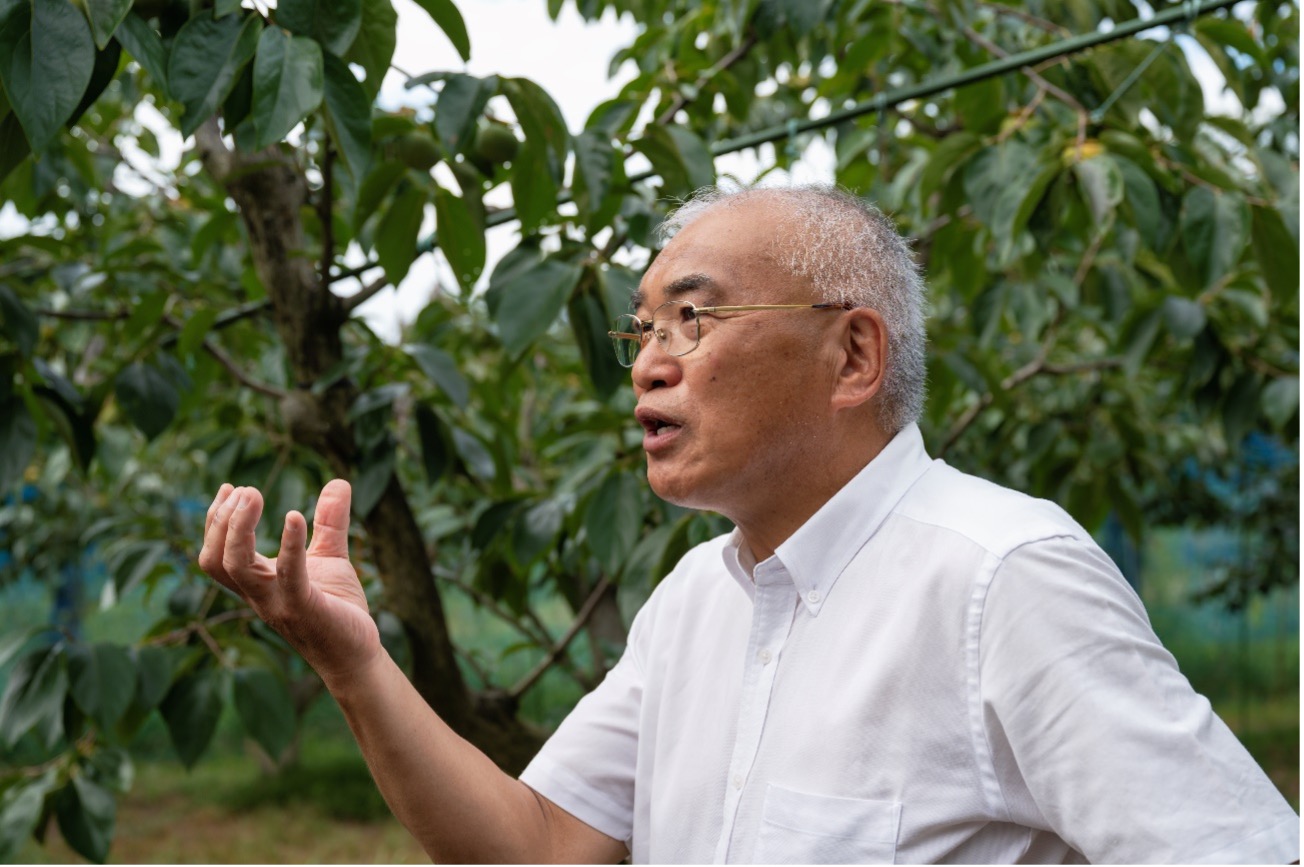
One Fruit per Branch is Ideal: Nurturing While Understanding Its Demanding Nature.
The “Takamatsu Monpei persimmon” has a slightly troublesome characteristic that worries its growers. Between mid-June and mid-July, a phenomenon called “physiological drop” occurs, in which the tree naturally sheds its fruit to protect itself. To reduce physiological drop, bud thinning (a process of thinning out the buds) is carried out in early May, along with pruning to ensure that sunlight reaches deep into the tree.
Fruit thinning in July also requires careful attention. While checking the number of leaves, the fruit is thinned to ensure that nutrients are evenly distributed to each carefully selected fruit to help it grow larger. “Both bud thinning and fruit thinning are important tasks, but there are risks involved,” says Mr. Ikeda. If too many fruits are dropped, the remaining ones can suddenly become too large and develop “stem-split” fruits. Stem-split fruit occurs when a gap forms between the fruit and the stem due to differences in growth rates, resulting in unsightly fruit that is also more susceptible to damage. When aiming for premium fruit weighing 300–320g (3L size), Mr. Ikeda mentions that you have to be prepared to give up 60–70% of the fruit on the tree to allow a single fruit to reach its full potential. Growing each fruit to such a large size is truly a challenge.
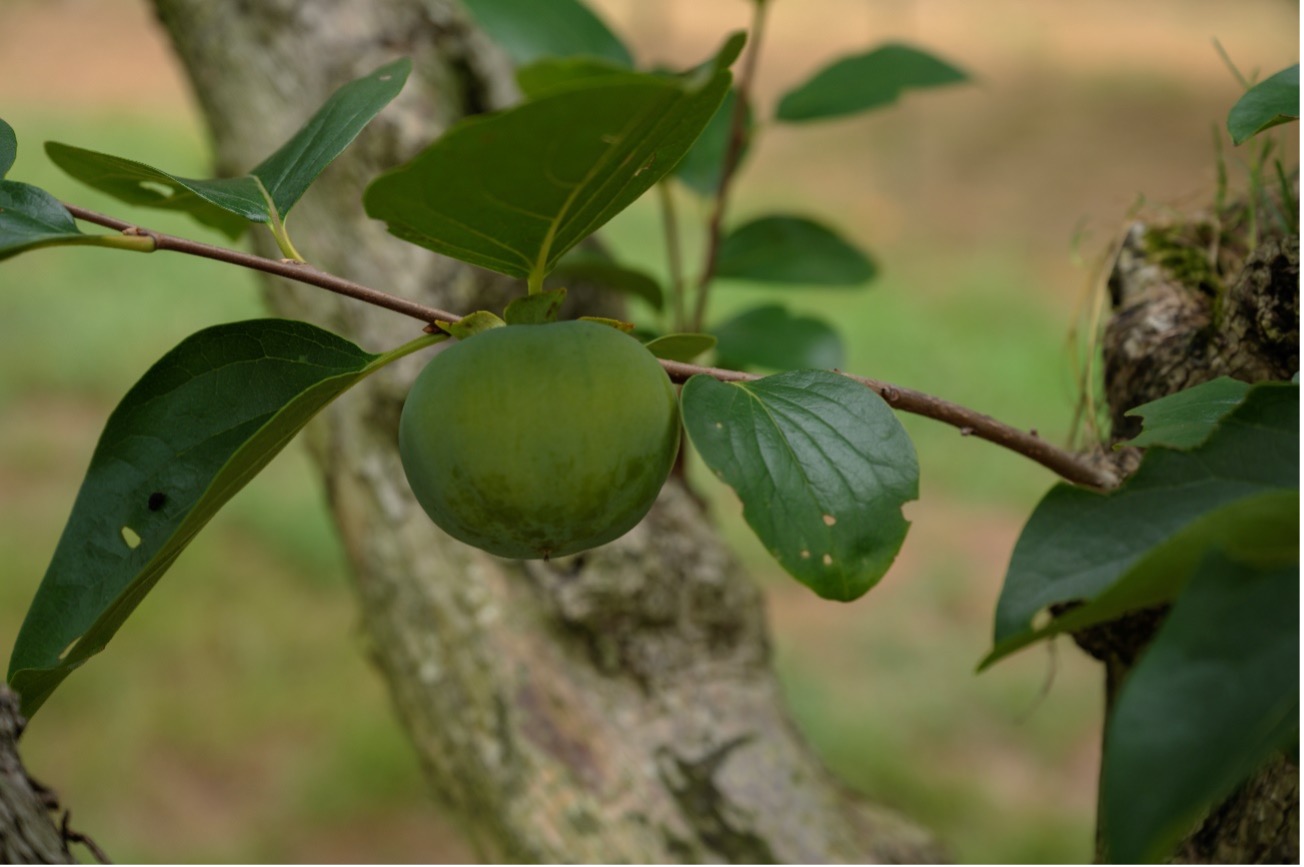
During the growing process, each grower applies their experience and intuition to determine how each tree can produce larger fruit, carefully observing the unique characteristics of each tree and making adjustments accordingly.
They also pay close attention to pruning. In order to help the fruit grow larger, it is necessary to allow the branches to stretch and the leaves to flourish, while ensuring that the fruit also receives sunlight. By limiting the number of fruit through thinning, sunlight is properly directed to the remaining fruit, increasing its sugar content. However, too much sunlight can lead to sunburn, so finding the right balance is a challenge. Climbing up and down the ladder, they carefully prune the branches while checking the overall condition to find the best state for the trees.
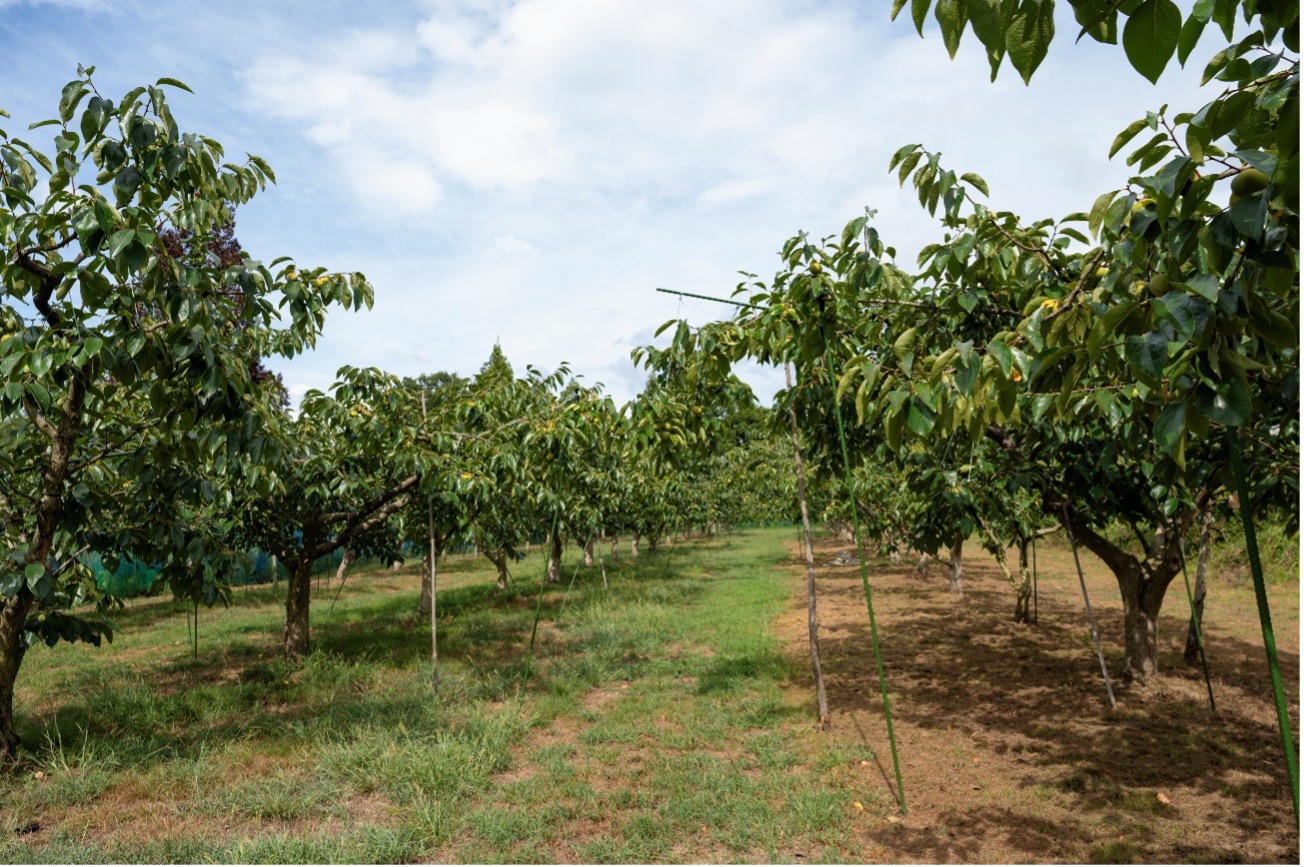
In addition to the fruit trees themselves, the grass around the trees plays a crucial role. Completely removing weeds can cause the soil to dry out too much, while allowing them to grow too densely can result in the weeds robbing valuable nutrients from the fertilizer. The surrounding environment, including the soil and weeds, is carefully managed as the fruit is nurtured.
Mr. Ikeda talks about the challenges of growing the “Takamatsu Monpei persimmon” in this way: “Most of the trees in my field are about 40 years old, but there’s no guarantee that every tree will bear good fruit every year. Some trees never bear good fruit no matter how many years pass, while others bear good fruit this year. I make sure to give them the same careful attention to fertilization and care every year, but it’s still hard to figure out their nature.” But perhaps that’s what drives Mr. Ikeda to think, “Next time, I’ll grow even tastier persimmons.” Despite the ongoing challenges, he smiles and says, “The sweetness of the fully ripened fruit is exceptional.” Mr. Ikeda’s passion and affection for the “Takamatsu Monpei persimmon” are truly touching.
Extremely Delicate! Harvesting with Care and Precision.
Finally, the harvest season arrives. The signs of harvest are the size and color of the fruit. According to a color chart, the fruit is harvested when it reaches a certain color.
The skin of the “Takamatsu Monpei persimmon” is very thin, so great care is taken during harvesting to avoid bruising or blackening before shipment. Each fruit is handled with special care and precision.
The annual target for fresh fruit shipments is around 70 tons. It is said that persimmons have “on years” and “off years.”
Mr. Ikeda carefully monitors the “on” and “off” years each season and adjusts his thinning efforts accordingly to ensure a consistent harvest.
After harvesting is completed in mid-November, he continues to prune, fertilize, and mow until about March in preparation for the next season. “It’s busy all year round, in one way or another,” he says with a bright smile, his expression reflecting the responsibility and pride of a professional.
Harvesting Isn’t the End! The Real Deliciousness Begins Here.
The “Takamatsu Monpei persimmon” is not shipped in its harvested state. While it is very sweet and delicious when it reaches our table, it is originally an astringent persimmon and contains a high level of tannin. The ones available for fresh consumption on the market have undergone a process called “datsujū” (de-astringency) shortly after harvest.
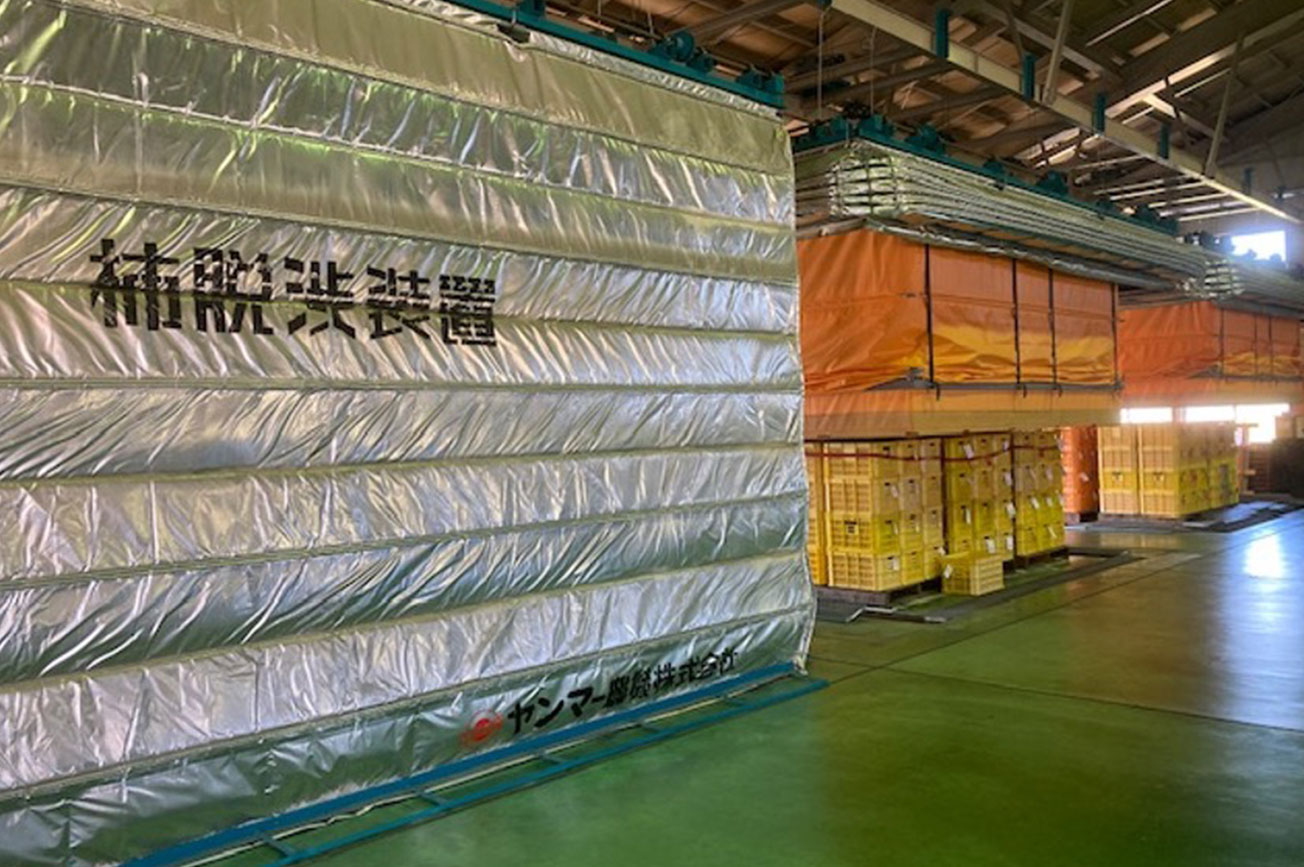
De-astringency is the process of removing the bitterness from the fruit so that it leaves no astringency when eaten. The method has evolved from the use of alcohol to a unique approach using carbon dioxide. This process brings out the sweet and rich flavor of the persimmon itself, ensuring that it is shipped in its best condition. This method also improves the shelf life of the fruit.
Tannin is the compound responsible for the astringency, but it also plays a role in improving blood circulation and is believed to help prevent high blood pressure. Additionally, it contains vitamin C and fiber, which is a nice bonus. To truly experience the flavor of the “Takamatsu Monpei persimmon,” the best way is to enjoy it fresh. As time passes, the fruit becomes softer, so it's enjoyable to eat at your preferred time. “When it becomes soft, freezing it and making a sherbet is also recommended,” says Mr. Ikeda. In the past, persimmons were eaten as a remedy for hangovers.
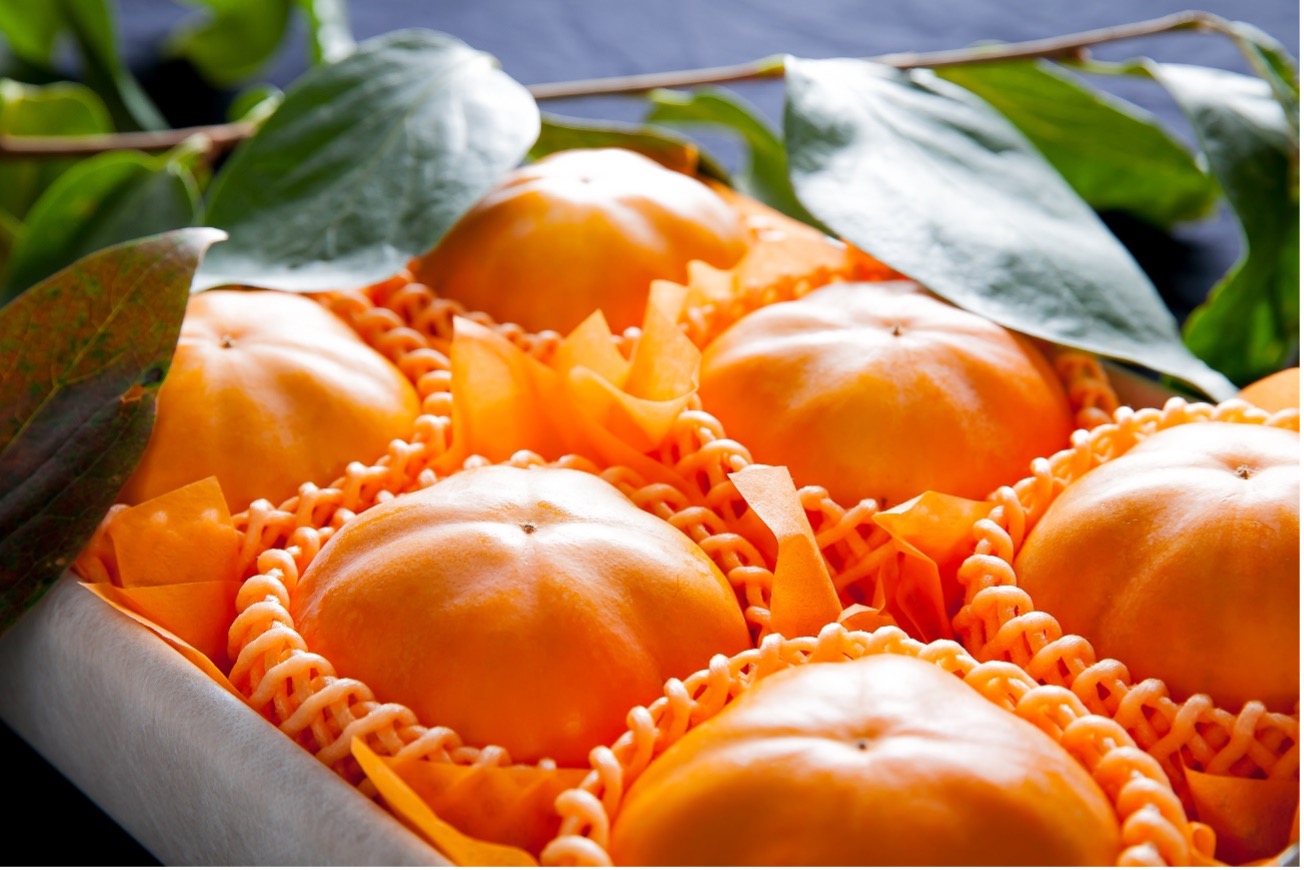
A Flavor Rooted in the Land, Accompanied by Prayers.
In the Setomachi community, a rare Shito ritual called “Kaki-no-Ki Itame” is still practiced every year in mid-January. In this ceremony, persimmon trees are intentionally cut, and adzuki bean broth is applied to the wounds as a prayer for a bountiful harvest. This tradition reflects the long history of persimmon cultivation in the region and its deep significance to the local people.
Mr. Ikeda shared his unique perspective on the ritual. “Persimmon trees need to have their bark peeled every few years to remove insects that have burrowed into the trunk and to clean the tree. Perhaps this ritual originated from this practice,” he said.
The “Takamatsu Monpei Persimmon,” born in this region, intimately connected to the lives of the people and beloved by the growers, has been cherished for generations. It is a remarkable fruit admired not only by Lord Maeda but also by modern people.